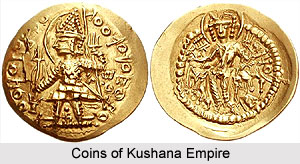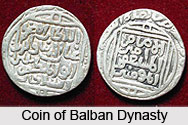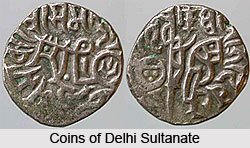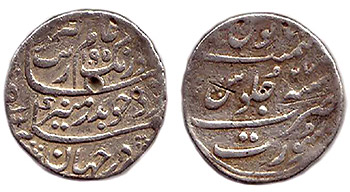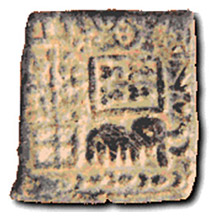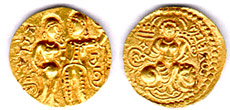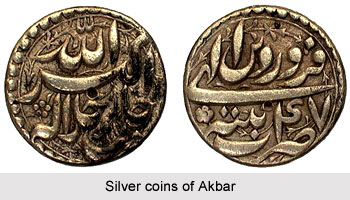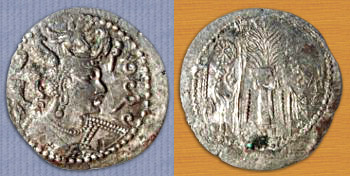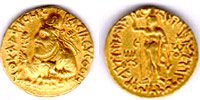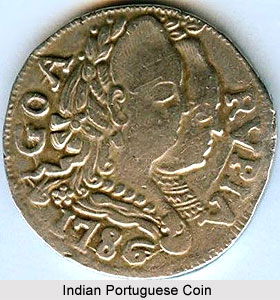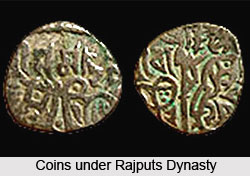 Delhi coinage under Rajputs was made up of silver-copper alloy. The production capacity of Delhi remained stable and the rate of production was also maintained fairly constant throughout the period. The quality of execution of the coins, especially from 1160 AD onwards, was superior in comparison with the billon coinage of the Gurjara-Pratiharas, but inferior to the Shahi coinage. The coins were popularly called Dehliwalas after their place of origin, and enjoyed wide currency in their own time. While virtually all of the hoards recovered date from the Ghurid or early Sultanate period show a post-conquest circulation pattern, the unusually high rate of attrition in circulation attests to both frequency of use and dispersal into neighbouring kingdoms in the pre-conquest period. From the pattern of hoard finds and historical inference, this emigration appears to have been largely towards the northwest of Delhi, or into the Punjab province. Since the Dehliwalas are not found in hoards together with the late debased coinage of the Yaminids of the Punjab or Ghurids in the Peshawar region, it has been assumed that they have travelled to that quarter as a trade currency or as plunder, rather than in general circulation.
Delhi coinage under Rajputs was made up of silver-copper alloy. The production capacity of Delhi remained stable and the rate of production was also maintained fairly constant throughout the period. The quality of execution of the coins, especially from 1160 AD onwards, was superior in comparison with the billon coinage of the Gurjara-Pratiharas, but inferior to the Shahi coinage. The coins were popularly called Dehliwalas after their place of origin, and enjoyed wide currency in their own time. While virtually all of the hoards recovered date from the Ghurid or early Sultanate period show a post-conquest circulation pattern, the unusually high rate of attrition in circulation attests to both frequency of use and dispersal into neighbouring kingdoms in the pre-conquest period. From the pattern of hoard finds and historical inference, this emigration appears to have been largely towards the northwest of Delhi, or into the Punjab province. Since the Dehliwalas are not found in hoards together with the late debased coinage of the Yaminids of the Punjab or Ghurids in the Peshawar region, it has been assumed that they have travelled to that quarter as a trade currency or as plunder, rather than in general circulation.
Historical references to the Tomara Rajput kingdom of Delhi are quite oblique. There are a few general statements that the Tomaras ruled Delhi, and that they were the protagonists in the Chauhan conquest of Delhi pre-AD 1164. Delhi coins under Rajputs claimed that they were freely exchanged one against the other. During most of the twelfth century under successive Rajput regimes, the coins were of a uniform design, and were not anonymous but bore the name of the issuing authority. In metal content, general weight range and design, the coinage was modelled on the Shahi dirhams, and more specifically the later Shahi-type derivative coinage of the eleventh century. The bull-and-horseman coins of Chahada Deva resemble the contemporary Delhi Sultanate coins in general fabric. Interestingly, some specimens of Delhi under Rajputs were virtually indistinguishable from some specimens of Prithviraj Chauhan`s coin.
Delhi coinage under Rajputs had been divided into three groups based on termination dates in order to compare the survival histories of the Rajput coins at three separate points in time. On all other coins of the Rajput bull-and-horseman series, the obverse legend mentions `Samanta Deva`; the reverse bears the issuer`s name. Regarding circulation of coins it was established satisfactorily by hoard analysis that for the most part, only one mint was involved in the minting of the Rajput bull-and-horseman coins.
